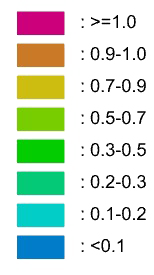'Mission Control'
Obuchi Lab
&
Sato Lab
of the University of Tokyo were commissioned by the curators of the
2021 United Arab Emirates National Pavilion, Wael Al Awar & Kenichi Teramoto, to design and bring to life a
novel architectural prototype, backed by the extensive research of the
skilled, multidisciplinary team behind the pavilion. Through the
creation of an inclusive and open construction process in which anyone
would be able to freely participate, the University of Tokyo
collaboration research team sought to interrogate often opaque
building practices by fostering community involvement throughout the
construction process and through the conceptual journey of the
curators. In addition to the construction system, this website is
designed to provide the general public with a real-time visualization
of all elements of the University of Tokyo construction system.
The Construction System
Real-time motion tracking equipment is utilized to provide a
continuously updated 3D scan of the constructed prototype, as well as
guidance to the builders in order to facilitate the construction of a
freeform, yet structurally sound architectural prototype. 3D data is
recorded and sent out to a tailor-made open-platform cloud system,
enabling real-time international interfacing, collaboration, and
visualization between the construction site in Venice and the
University of Tokyo where the constructed geometry undergoes a
structural analysis which optimizes the prototype structure and
updates the guidance instructions for the construction team on-site in
Venice.
Construction visualization
There are three kinds of scan points:
Gray points for each unit
Blue points for wire-connected units
Red points for position verifications
These points are a representation of the randomized & nonstandard
geometry of each individual unit
Coloured lines connecting each scan point represent the structural
stability of the construction. The colour scale ranges from blue for
very stable areas, to red for unstable areas.
Virtual Reality Mode
This website has been built to support WebXR. Through Virtual Reality,
you are able to experience the construction process in real-time at a
1:1 scale. This WebXR implementation has been optimized for the Oculus
Quest series of headsets. Simply navigate to this page from the
headset directly and enter VR mode.
Locomotion is achieved via your headset controllers' analogue sticks.
The left analogue stick's X-axis controls strafing, and the Y-axis,
altitude. Clicking this stick will reset you to the groundplane. The
right analogue stick controls forward movement on the Y-axis and head
rotation on the X-axis.
For timeline control functionality, you can play the construction from
0% to 100% by pressing the left controller's Y button. For timeline
scrolling, hold down either controller's main trigger and extend your
arms. The timeline is controlled by the distance between the two
controllers - 0% for 0cm, and 100% for 100cm of separating distance.
Timeline scrolling is also available for hand tracking systems. Simply
touch your index and middle finger together on either hand to trigger
the scrolling system.
Web Design by Alex Orsholits
For information on this website, contact alex-orsholits [a/t]
g.ecc.u-tokyo.ac.jp


